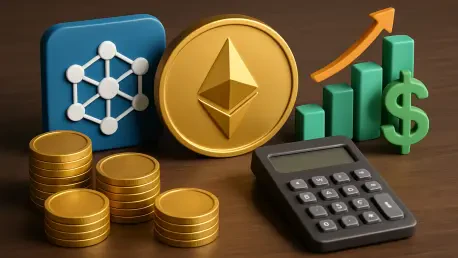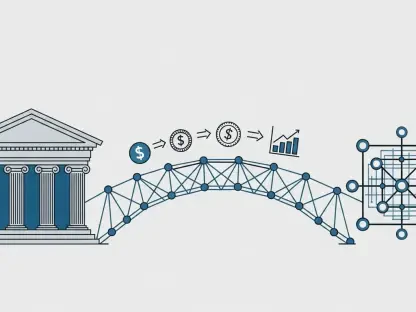The realm of cryptocurrency has been witnessing ongoing evolution, with numerous digital assets vying for dominance in capturing both user interest and institutional backing. Among these emerging technologies, Solana and Cardano have positioned themselves as noteworthy players, each drawing attention for different merits and prospects. As stakeholders try to discern which of these two blockchain platforms holds promises for future growth, the discussion pivots on their current technological performances, market acceptance, and potential scalability. With blockchain technology advancing rapidly and affecting various sectors, understanding the contrast between Solana’s swift innovation and Cardano’s methodical progression has become increasingly relevant.
Solana’s Rapid Ascendancy
Solana has emerged as a prominent force in the cryptocurrency landscape, solidifying its position through rapid technological advancements and market engagement. Known for its ultra-fast transaction speeds and minimal fees, Solana has cultivated a loyal user base and gained traction across numerous applications. A typical transaction costs about $0.0008 and confirms almost instantaneously, making Solana particularly attractive for various decentralized finance (DeFi) operations. In the context of network revenue and activity, Solana reported $271 million in the second quarter and sustained a commanding presence in the DeFi space with $9.3 billion in total value locked (TVL).
The appeal of Solana extends beyond its cost-effectiveness and speed. The platform has successfully attracted a diverse range of projects encompassing NFTs, AI-driven data networks, and real-world asset tokenization. This breadth of adoption speaks to Solana’s versatility in catering to different growth sectors and engaging both consumer and institutional channels. The ecosystem’s adaptability allows developers the confidence that it can continuously meet evolving needs, fostering innovation significantly. Moreover, Solana’s expanding stablecoin float, currently set at $10.4 billion, reflects substantial growth dynamics and increased confidence among users and developers alike.
The Challenges Facing Cardano
Contrasting sharply with Solana’s brisk momentum, Cardano finds itself grappling with a series of issues that have impeded its growth and adoption. The blockchain’s transaction fees are notably higher, standing at $0.29, and settlement times range from 15 seconds to over a minute, thus contributing to a relatively less favorable user experience. Consequently, Cardano’s DeFi undertaking has witnessed a contraction, with its TVL dwindling to $319 million. Accompanying this downturn is a 32% drop in fee revenue, highlighting a shortfall in user and developer engagement. Such figures underscore the hurdles that Cardano must surmount to regain its standing.
Central to Cardano’s challenges is its scaling solution, Hydra, which remains largely theoretical and underutilized despite its promise to enhance throughput. This technological stagnation stymies Cardano’s capability to accelerate its platform effectively. Similarly, a significant impediment arises from the modest scale of Cardano’s stablecoin market, which stands at a mere $32 million, indicating constraints in drawing institutional interest and capital. While Cardano adheres rigorously to a structured development model emphasizing security, this approach dampens its scalability compared to competitors, leaving investor and user enthusiasm uncertain at this juncture.
Growth Engines and Good Intentions
The contrasting narratives of Solana and Cardano hinge on a central theme: the difference between dynamic growth engines and well-intentioned progress. Solana is effectively leveraging its efficient technology and economic scalability to navigate across diverse sectors, tapping into both consumer and institutional avenues. Its fast-paced development reassures developers that the blockchain can keep pace with technological shifts, fostering confidence and sparking innovation. Solana’s flourishing environment, characterized by rapid development cycles, has fortified its standing as a magnet for numerous projects promising societal and economic value alike.
Conversely, Cardano’s rigorous focus on security and meticulous development protocols serves as a double-edged sword. While fundamentally advantageous for establishing a secure blockchain environment, this approach inherently slows down adaptability and scalability, resulting in a lag in attracting diverse digital ventures. With Hydra’s potential largely unrealized, Cardano faces obstacles in scaling its operations effectively. Until mid-2025, rendering broadly applicable results remains a challenge, curtailing its potential to enhance throughput and maintain competitiveness. As a result, Cardano must address its core developmental strategies to revitalize engagement and appeal.
Investment Decisions and Future Considerations
From an investment perspective, Solana appears to offer a more robust proposition given its demonstrated product-market fit and revenue trajectory. Its capacity to attract various projects and harness institutional interest generates optimism for continued growth. Conversely, Cardano must confront substantial challenges to reinvigorate user expansion and developer enthusiasm. Without significant advancements in Hydra’s adoption or forging new influential partnerships, the platform must rely on its principles alone to fend off competitive threats. However, addressing these systemic issues could place Cardano back on an upward trajectory, drawing renewed investor confidence.
Looking beyond the immediate circumstances, investors must evaluate opportunity costs linked with potential scenarios. While waiting for Cardano to catch up might involve greater risk, Solana presents tangible benefits and remains seemingly versatile amid changing currents. Historical realities accentuate the importance of timely decisions, where previous market leaders have witnessed rapid rises and subsequent descents. As evidenced by past stock market fluctuations, proactive measures to seize opportunities early can safeguard returns. Therefore, the diversity in Solana’s offerings makes it a compelling choice.
Balancing Prospective Outcomes
The landscape of cryptocurrency is in a constant state of evolution, with a variety of digital assets contending for top spots to gain user interest and institutional support. In this fiercely competitive field, Solana and Cardano have emerged as significant contenders, each attracting attention for unique reasons. Solana stands out for its rapid innovation and the high speed of its transactions, making it appealing to users seeking efficient blockchain solutions. In contrast, Cardano is noted for its thoughtful, methodical approach to development, emphasizing security and sustainability. As investors and developers explore which platform might offer the greatest potential for future expansion, the debate centers around their technological capabilities, acceptance in the market, and scalability prospects. With blockchain technology impacting diverse industries, understanding the differences between Solana’s quick advancements and Cardano’s careful evolution has become more important for stakeholders looking to identify the best opportunities.









